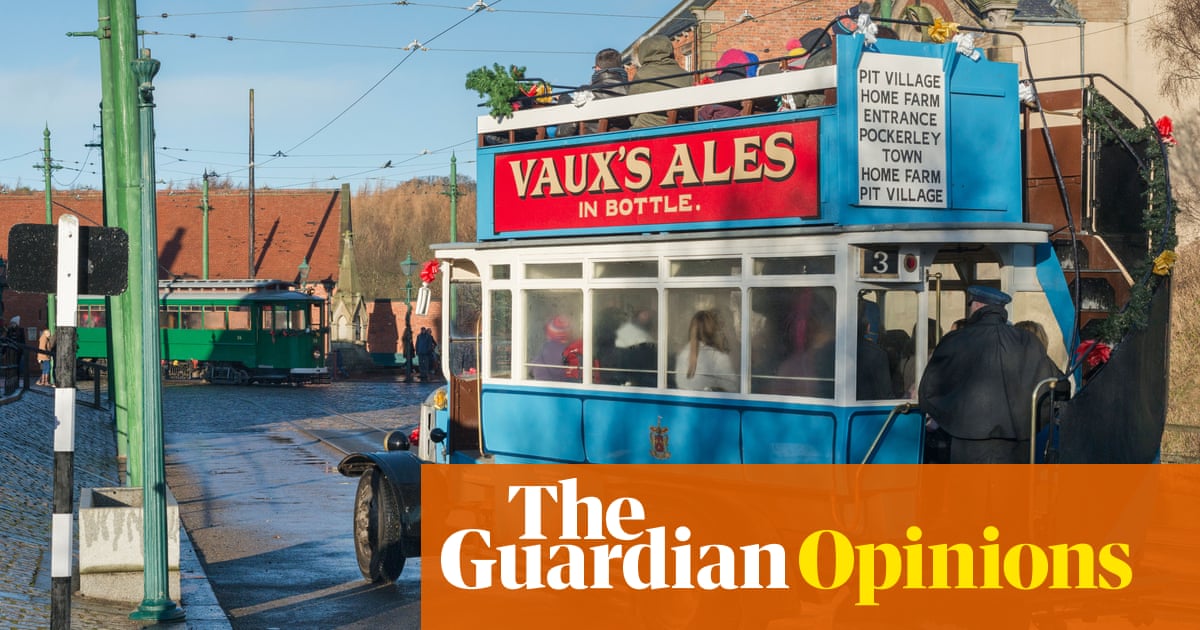“Real museums are places where time is transformed into space,” Orhan Pamuk, the Nobel laureate, writes in his 2008 novelThe Museum of Innocence. Pamuk created asmall museumof everyday objects based on the novel in celebration of his home city of Istanbul. A long way from the Bosphorous, this is whatBeamish, the Living Museum of the Northsets out to do, recreating the 19th- and 20th-century working-class history of north-east England over 350 acres in County Durham. Last week it won the prestigious Art Fund museum of the year award.
Theshortlistincluded museums from the UK’s four nations:Perth Museum, which opened last year;Chapter, a multi-arts space in Cardiff;Golden Thread, a contemporary arts hub in Belfast; andCompton Verney, an 18th-century Warwickshire mansion, whose sculpture park is home to Louise Bourgeois’s Spider.
Inspired by the open-air museums in Scandinavia, Beamish was founded byFrank Atkinson, who became its curator in 1970. At the time, his vision of rebuilding a slag heap really did mean taking coals to Newcastle, but he recognised that the region’s industries, and with them its identity, was in danger of disappearing. The people of north-east England “tended to have a chip on their shoulder about their past, proud of it and yet feeling that it was undervalued”,he said. “The museum was for them. Tourism didn’t exist up there when we first planned it.”
Where many museums have struggled to return to pre-pandemic figures, last year Beamish welcomed839,000 visitors– the highest number in its 55 years. As part of a£20m development project, a 1950s village has been added to its Edwardian town, with miners’ cottages and a farm. Buildings from the surrounding area have been transported brick by brick and many of the 3m objects have been donated from people’s attics.
From teapots to trolleybuses, this is the ephemera of ordinary lives. More than 800 local volunteers and staff in period costumes bring the past alive. There are no glass walls, velvet ropes or wall captions. You can buy bread from the Victorian bakery, pat pit ponies and get a 50s bouffant blow‑dry at the hairdressers.
This is clearly a sanitised version of the past, where you can go down a pit without getting your hands dirty. The cultural historian Robert Hewison included Beamish in what he identified as a Thatcherite phenomenon of ersatz nostalgia and commercialisation: “Instead of manufacturing goods, we are manufacturing heritage,” he wrote in his 1987 polemicThe Heritage Industry.
In a region where the waiting list for social housing hasincreaseddramatically in the last five years, an idyllic “model” village might have been expected to cause resentment. Instead,research showsthat it is a source of pride. Local museums tell local stories. They also employ local people and bring in visitors. In its first year,Perth Museumexceeded its visitor target by 50%, whilecity-centre footfall also increased.
For many, museums are as much a part of the British summer as music festivals and sporting events. They are certainly a lot cheaper. With the world’s treasures in our pockets, and limitless information at our fingertips, today’s museums must offer something more, especially for children. Long before mobile phones, Beamish was one of the first immersive museum experiences. Here the past is not a foreign country – you can get there on a tram.
Do you have an opinion on the issues raised in this article? If you would like to submit a response of up to 300 words by email to be considered for publication in ourletterssection, pleaseclick here.
